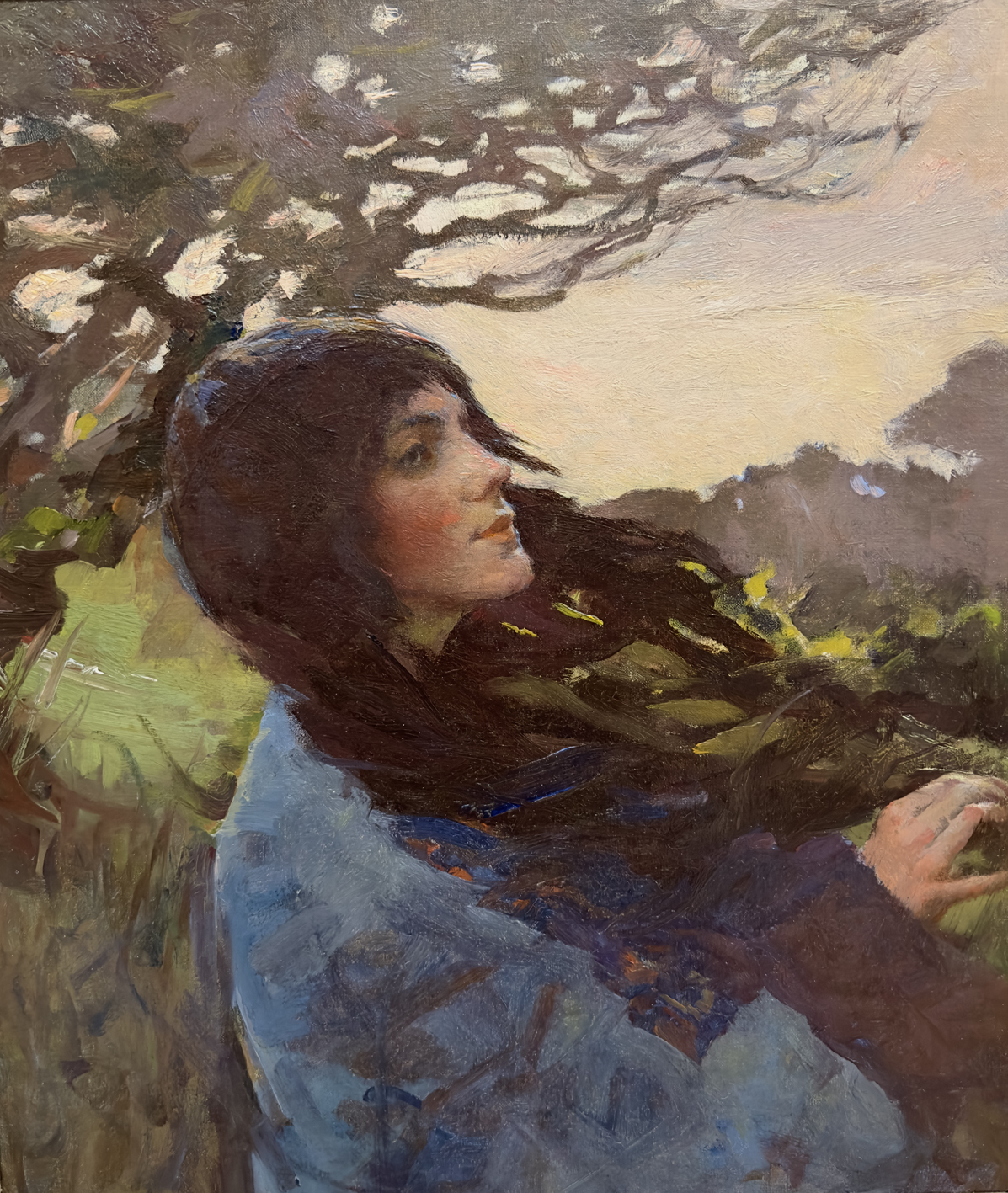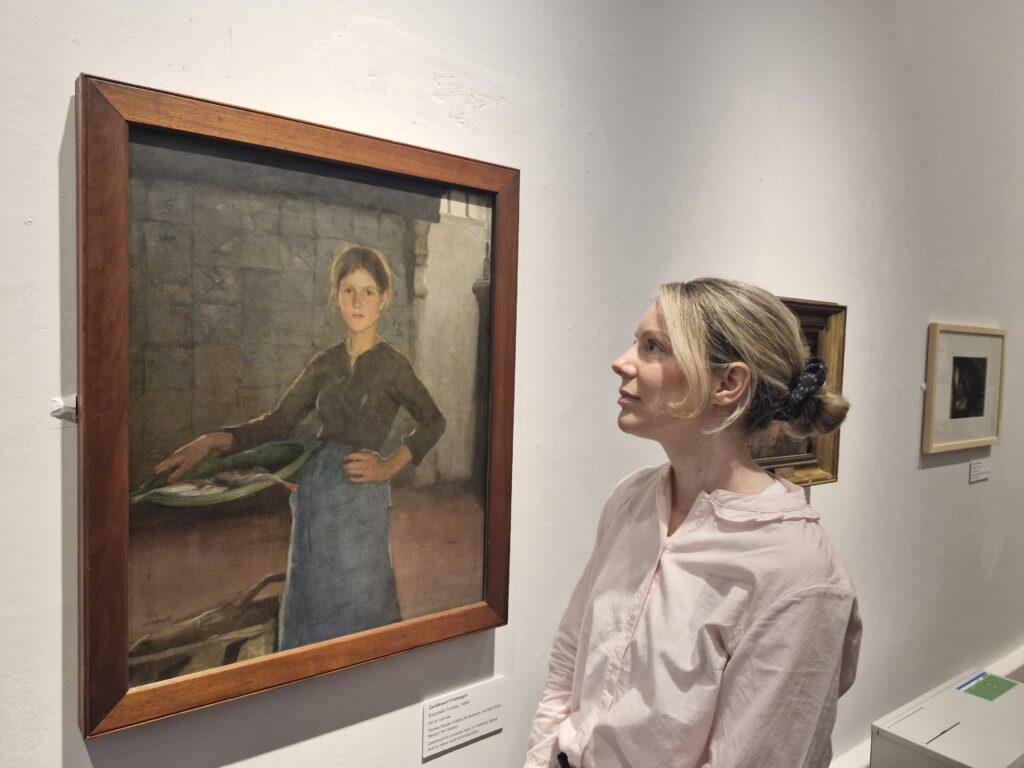
Art history has been built on the myth of individual geniuses who have, according to the canon, worked tirelessly and alone in their studios. But anyone visiting Worcester City Art Gallery and Museum will be greeted by two partners – in marriage and art – Elizabeth and Stanhope Forbes, who worked side-by-side, and often en plein air, to pioneer British Impressionism.
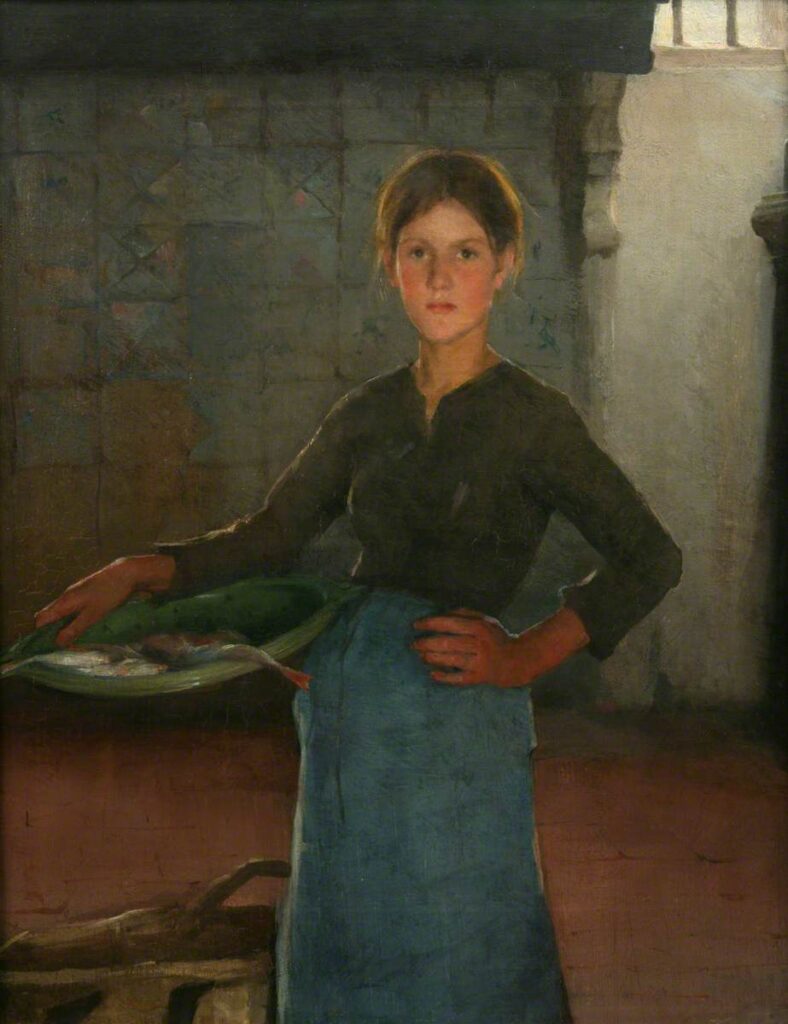
Gazing at the viewer from the exhibition’s first wall is ‘Zaandvoort Fisher Girl’ (1884) by Elizabeth, acting as proof that she was already a successful artist before meeting Stanhope. As sunlight streams through a high window, it illuminates the girl’s face, creating a halo effect around her hair, while also drawing attention to the platter of iridescent fish she holds against her hip. The Canadian-born painter spent her early career in Europe, seeking to capture the effects of light on everyday scenes.
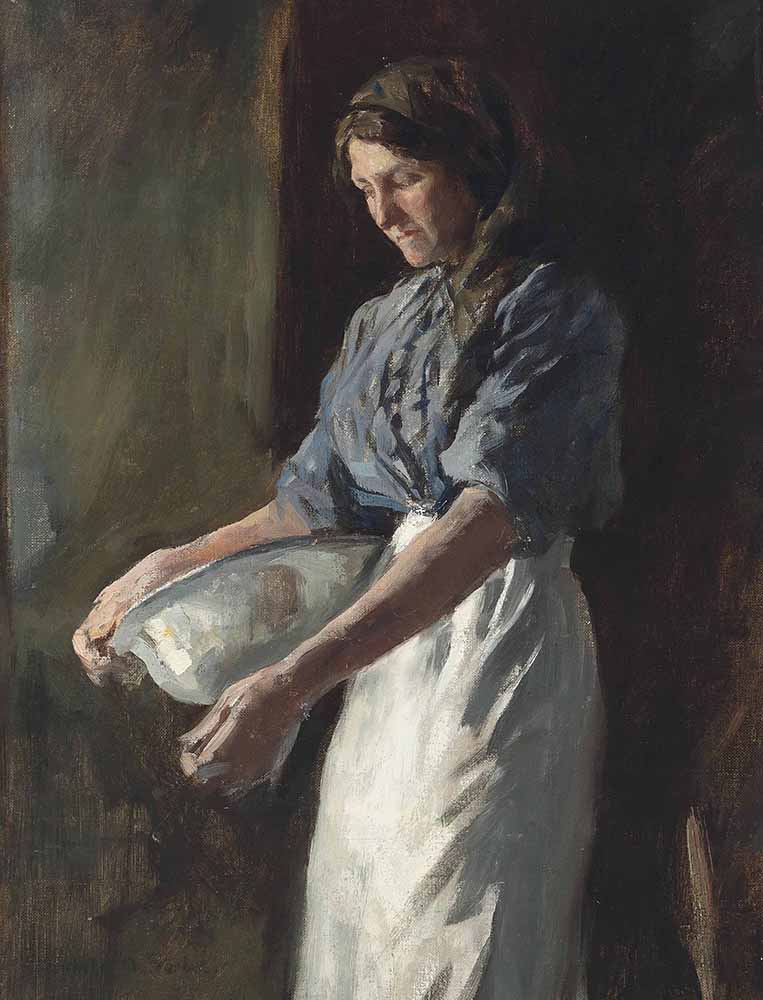
Hanging on the opposite gallery wall, as if in direct conversation with this painting, is ‘The Farmer’s Wife’ by Stanhope. Similarly, he has framed the beauty of a woman at work, as light catches her apron, hands, and silver dish. He, too, was sought to evoke the atmosphere and immediacy of daily life after painting in Brittany during the 1880s.
Having both spent time independently in France, Elizabeth and Stanhope journeyed to Cornwall in search of light. Here, they not only found it, but one another; and in 1889 they got married. A colony of artists was already forming along the coast, but it was the Stanhopes, together, who formed the famous ‘Newlyn School’ which flourished as others joined them, setting up easels to paint outdoors.

Among Stanhope’s masterpieces from this period, and a star of this show, is ‘Chadding on Mount’s Bay’ (1902), which has been voted for by visitors as their favourite artwork in Worcester City Art Gallery’s permanent collection. It’s not hard to see why; as a group of children fish for herrings, their reflections shimmer in the clear, blue water below, evoking easy fun on a hot summer’s day.
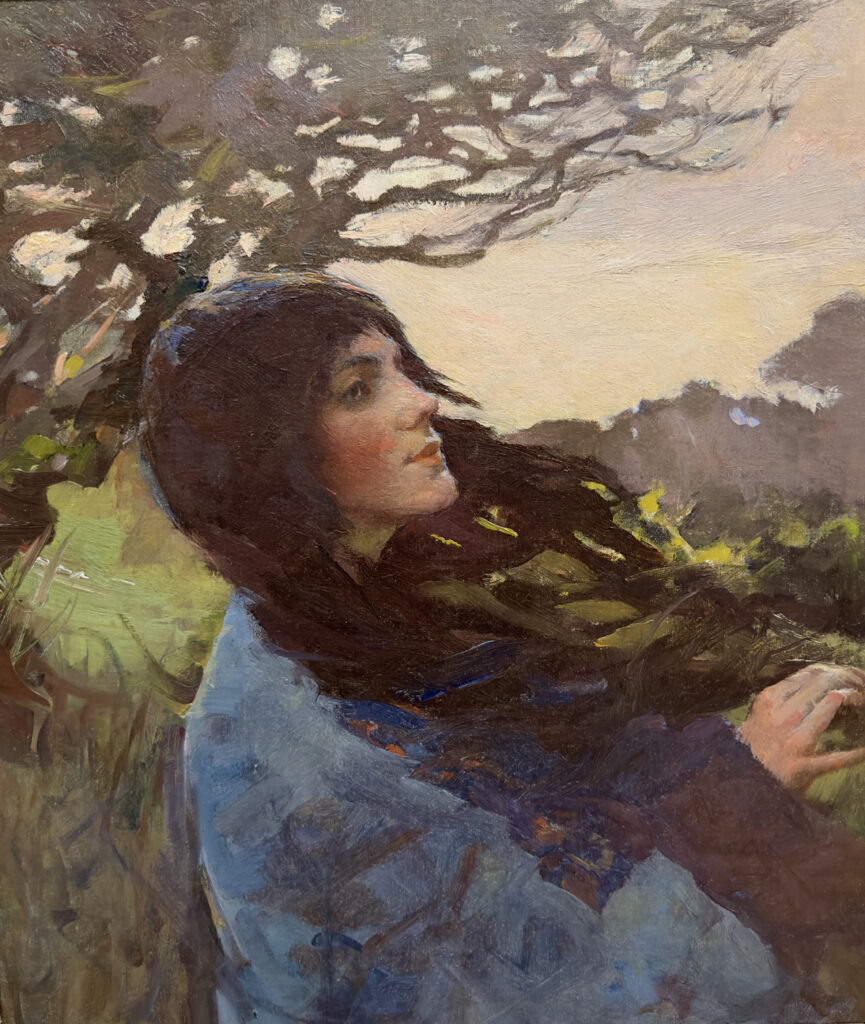
While male artists in Newlyn painted the working life of the fishing village, Elizabeth was more keen on depicting women and children either at home or engaged in leisurely outdoor pursuits. One of the show’s highlights is ‘Autumn Breeze’, in which Elizabeth has portrayed a young woman, wrapped in a blue coat, who seems to be blown across the picture plane.
As a tree’s branches tilt, the subject’s long, dark hair becomes tangled in impressionistic brushstrokes of green, yellow and black. The atmospheric scene looks like the start of a fantasy story in which this wayward heroine journeys through a wild, autumnal wood.
Through intimate, poetic portraits such as this, Ellizabeth invites viewers inside the minds of her subjects. Working a little closer to home, she also depicted her husband who appears in a pencil on paper drawing, ‘Stanhope Forbes at the Easel; (c.1890s), which Worcester City Art Gallery recently acquired. Although representing him as an artist at work, paintbrushes in hand, she has also captured her husband in a personal moment of quiet contemplation.
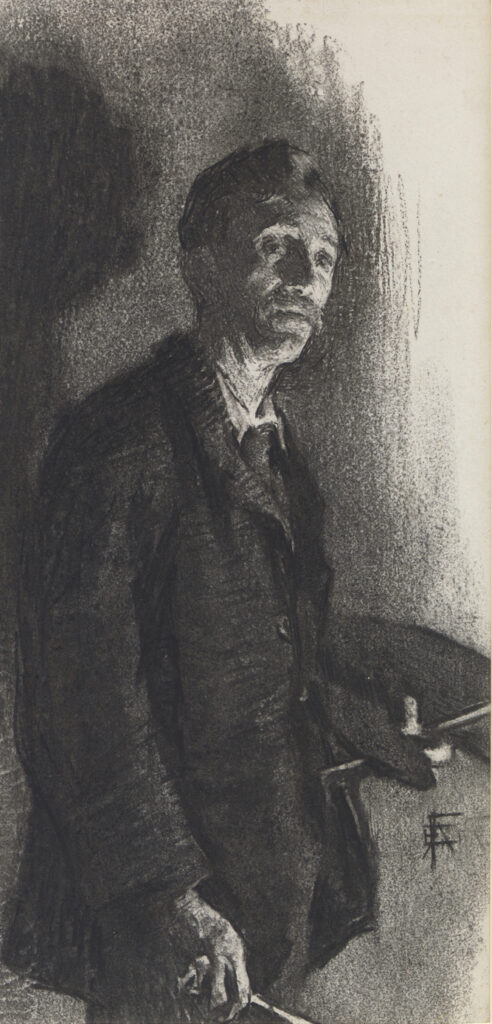
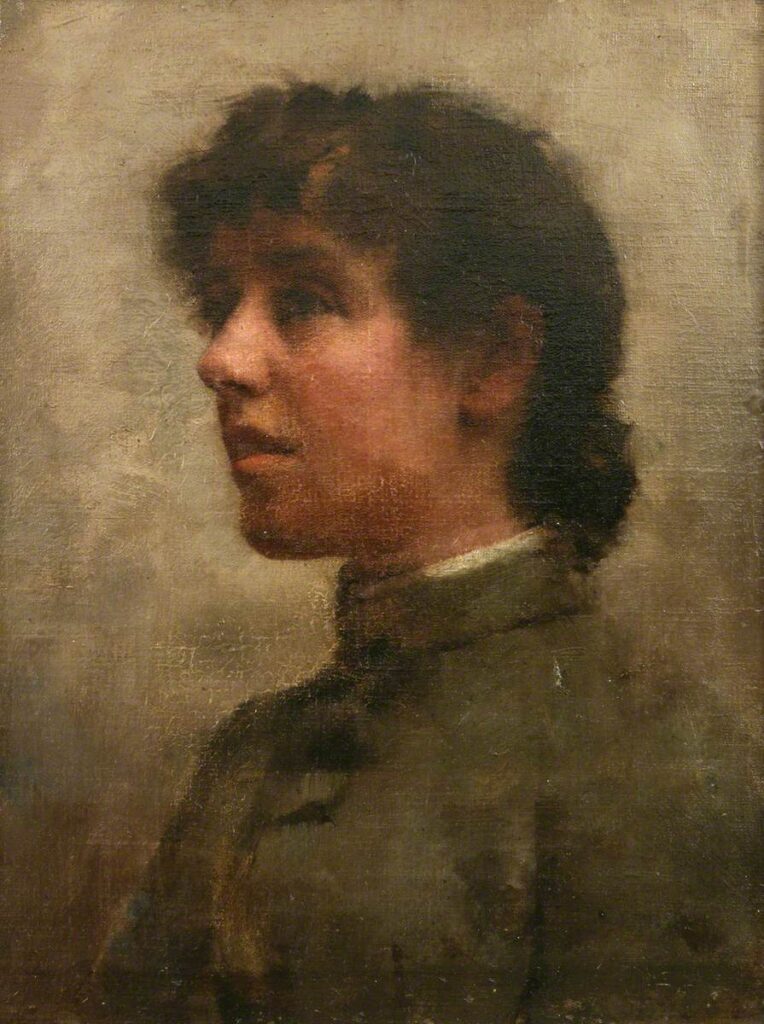
Also on display is Stanhope’s portrayal of ‘Elizabeth Adela Forbes’ (c.1890), who stands in a painter’s smock, mouth slightly open, staring confidently into distance. This pair of portraits speak of the mutual love and admiration this creative duo had for one another.
While some women artists never achieved the same artistic, professional or commercial success as their male partners, this exhibition proves that Elizabeth and Stanhope were equals, whose personal relationship had a positive impact on their practice. Encouraging one another, and sharing ideas, they embraced Impressionism and brought it to life in Britian during the late 19th century.
During her lifetime, Elizabeth was a vibrant contributor to the art colony, she regularly exhibited at the Royal Academy. and sold more work than most of her male contemporaries. However, sadly, she died of cancer in 1912, aged only 52. Since then, as is often the fate of women artists of the period, she came to be regarded as an appendage of her more famous husband and, over time, her influence within this story became obscured.
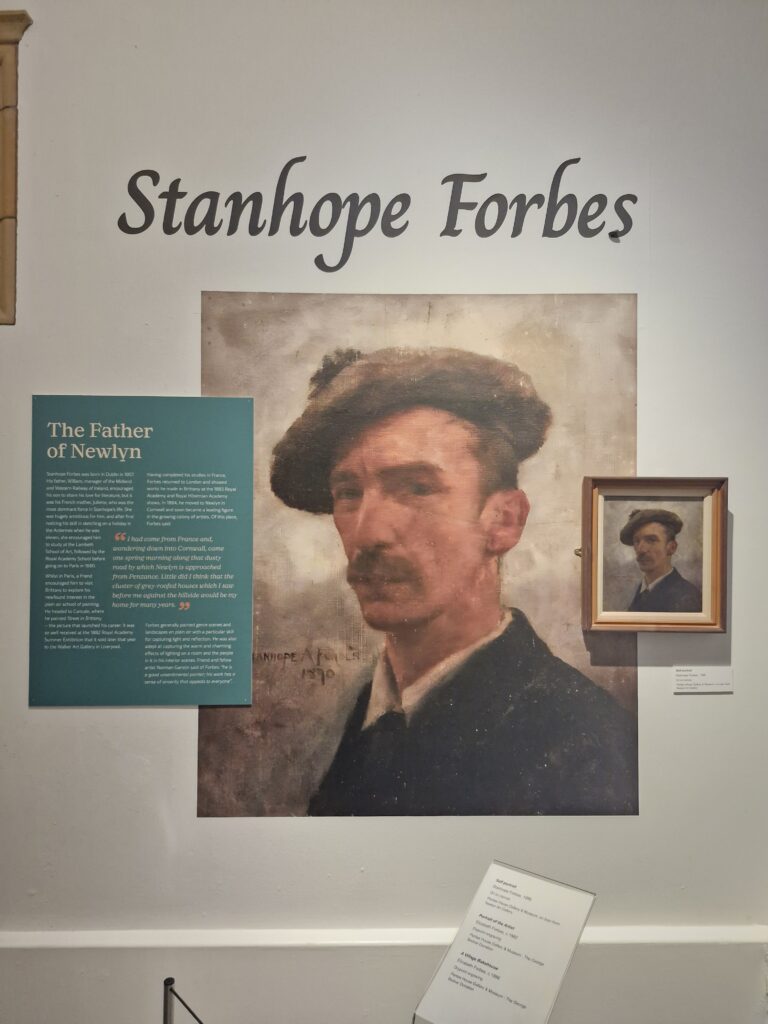
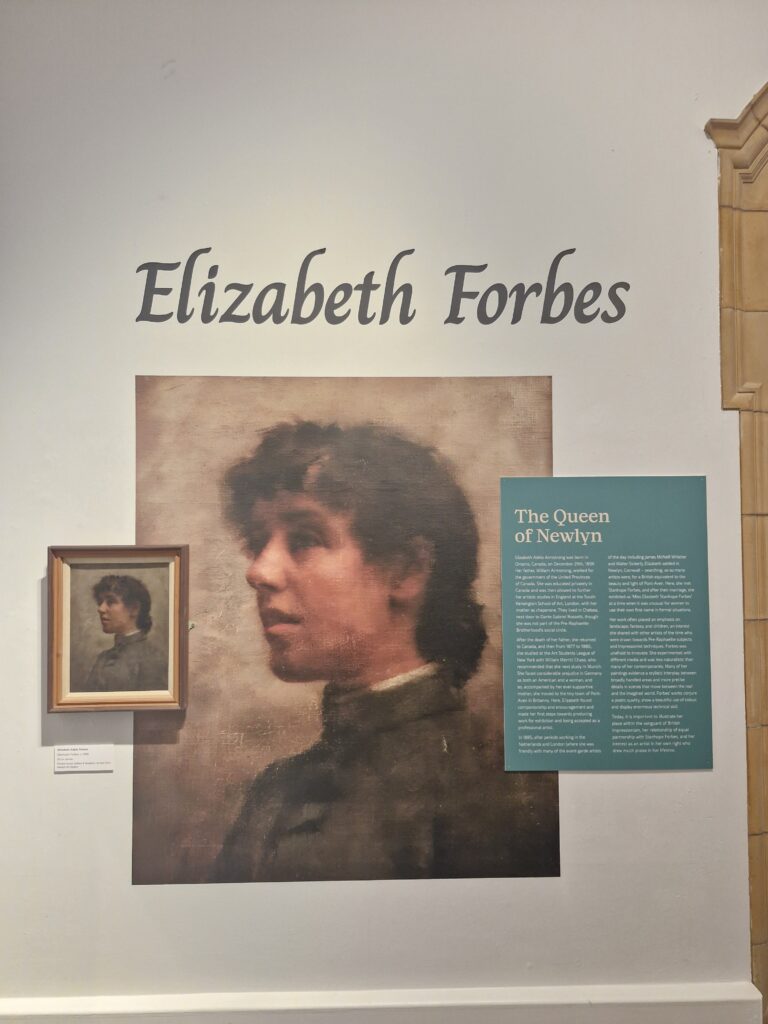
Bringing together key loans from Penlee House Gallery & Museum, Newlyn Art Gallery and The Bowerman Collection, this sumptuous exhibition importantly repositions Elizabeth alongside Stanhope, presenting them as creative counterparts, who stood shoulder to shoulder. This fact is visualised in clever bit of curation: large-scale reproductions of both their portraits assume iconic status inside the gallery.
The couple’s legacy is also celebrated in this show, which includes paintings by their wider circle of friends, and Newlyn School peers. Among the stand-our works is a light-filled landscape by Dame Laura Knight, who was among a younger generation of British painters strongly influenced by the Forbes.
While Stanhope has long been celebrated as the ‘Father of Newlyn’, this show repositions his artist-wife as an equally talented painter of light who pioneered British art. In her obituary, she was mourned as the ‘Queen of Newlyn’, a title this illuminating exhibition bestows upon her once again.
‘Elizabeth & Stanhope Forbes: A Marriage of Art’ is on show at Worcester City Art Gallery and Museum until 29 June, 2025
